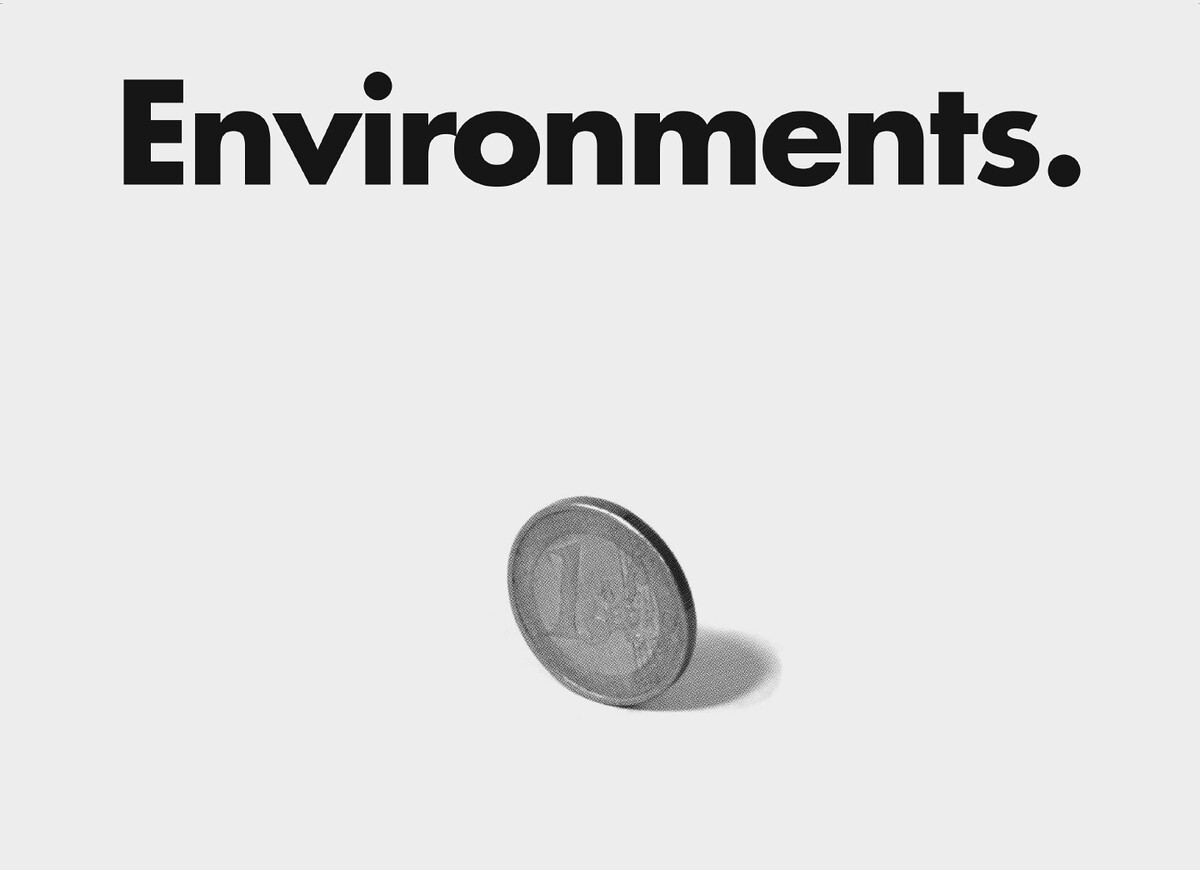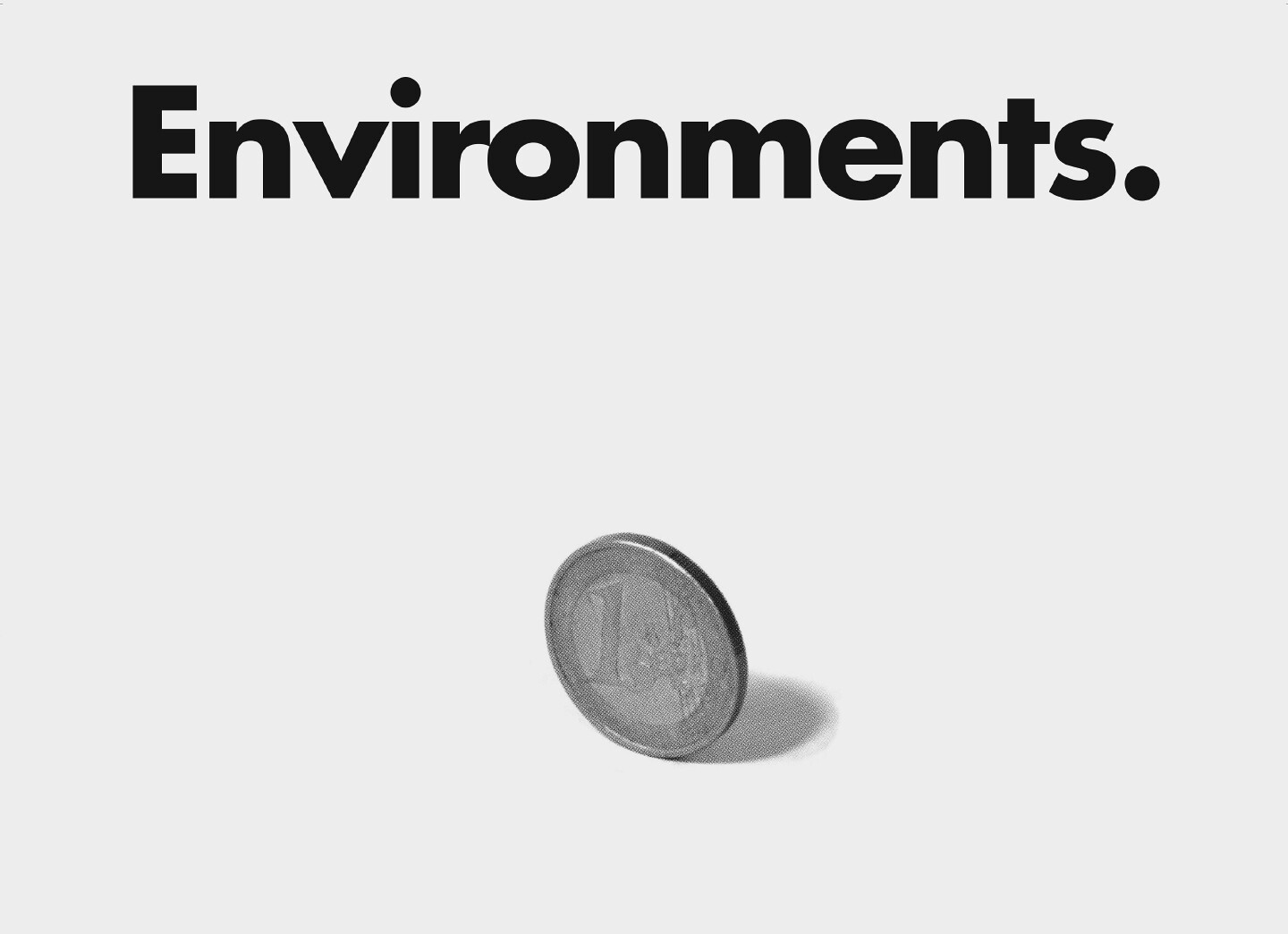September 3, 2013
In 1972 the future ended.
This was the year a “Report on the Human Environment” titled The Limits to Growth was published, coding the world into a systems-dynamics model and projecting the economy well into the 21st century. From this point on an ecological worldview would be meshed with the language of international policymaking tribunals, while finance markets and neoliberalism would become naturalized. This report is the source for The Limits to Growth (2013), one of four video works by Pedro Neves Marques and Mariana Silva premiering alongside previous works in their joint exhibition Environments at e-flux from September 17 to November 2, 2013.
The generations that came after 1970 have grown up with a horizon delineated by a weak ecology, by unemployment, by diminishing retirement funds. In seven years it will be 2020. It is said that a global financial and ecological catastrophe is coming, when in fact it may have already happened. And if this is indeed the case, could the lump of anxiety lodged inside each of us be the residue of an ongoing trauma experienced in the past, one that flares up at each social or economic upheaval?
In June 2013 the Greek public television station ERT was defunded and shut down as a consequence of the European crisis and Greece’s debt-ridden economy. After ERT’s 2,700 workers were sacked, they carried on making shows for online streaming and satellite relay channels. Marques and Silva’s video Beams of Cathodic Rays Shooting (2013), shot in a television studio in New York City, evokes the moment ERT broadcasted its own ending live to a worldwide audience by turning its cameras onto demonstrations outside the main ERT building in the suburbs of Athens.
The video Explore, Experience, Enjoy (2013) comprises two 3D-simulated projections of exhibitions within the exhibition, opening the physical limits of the space to further objects and works. In these temporary walls, financial dependencies, worker’s memorabilia, rhetorics of leisure, and welfare state nostalgia accumulate in the face of an instability that repeatedly converts concepts into objects and objects back into concepts coming to us through screens and scenes. The simulated space of these exhibition rooms has the uncanny effect of rendering the physical exhibition as an artifact, but also of merging into it through the medium of information. It is here that the projective and the material fuse together into a single environment—one that mirrors the simultaneous liquidation and saturation of an unstable ecology we used to call the public.
Environments is the first exhibition collaboration between Portuguese artists Pedro Neves Marques and Mariana Silva. The show will continue as a series of events programmed for the month of October, both in and outside of the e-flux exhibition space. Further details on events will be updated on this page.
Pedro Neves Marques (Lisbon, 1984, lives in New York). Solo shows include The Chosen Ones, Galeria Pedro Cera, Lisbon, Portugal, 2012; The Integration Process, Parkour, Lisbon, 2012; When’s the end of celebration?, Galleria Umberto Di Marino, Naples, Italy, 2011; and Uma Cortina de Fumo/ Mármore e Vidro, with André Romão, Fundação EDP, Lisbon, 2010. Neves Marques has participated in several group shows, including Contra-Escambos, Palácio das Artes/ Edifício Fonte, Belo Horizonte/ Recife, Brazil, 2013; Resonance and Repetition, Elizabeth Foundation for the Arts, New York, 2012; and Montehermoso Art & Research, Centro Cultural Montehermoso, Vitoria, Spain, 2012. He has been resident at Zentrum Paul Klee Sommerakademie, Bern, Switzerland, 2010, and at Antonio Ratti Foundation, Como, Italy, 2009. In 2012 he published a collection of short stories, “The Integration Process” (Atlas Projectos; Berlin/Lisbon).
Mariana Silva (Lisbon, 1983, lives in New York). Solo shows include P/p, Mews Project Space, London, 2013 and The organization of forms, Kunsthalle Lissabon, Lisbon, 2011. Silva has participated in several group exhibitions, namely, To the Arts, Citizens!, Serralves Museum, Oporto, Portugal, 2011; For Love, not Money, 15th Tallinn Print Triennial, 2011; Perpetual Interview, Cristina Guerra Contemporary Art, Lisbon, 2010; Into the Unknown, Ludlow 38, New York, 2010; República ou o Teatro do Povo, Arte Contempo, Lisbon, 2009; and BesRevelação 2008, Serralves Museum, Oporto, 2008. She was a resident at Zentrum Paul Klee Sommerakademie, Bern, Switzerland, 2010, and at ISCP, New York, 2009–10.
Pedro Neves Marques, Mariana Silva, and e-flux would like to thank: Mike Andrews, Jim Bittel, Dr. Christine Choirat, João Cáceres Costa, Lia Gangitano and Participant Inc., Patrick Parrish and Mondo Cane, and Jonathon Sturgeon.
For further information please contact laura [at] e-flux.com.
Reviews
“Pedro Neves Marques and Mariana Silva”, Artforum • Jordan Lord
“Environments,” Pedro Neves Marques and Mariana Silva’s New York debut, is based on The Limits to Growth , a 1972 MIT-led report showing that capitalism could grow exponentially until hitting certain ecological tipping points. Marques and Silva have represented the report with a video by the same name, which models the results in 3-D…
“Environments,” Pedro Neves Marques and Mariana Silva’s New York debut, is based on The Limits to Growth, a 1972 MIT-led report showing that capitalism could grow exponentially until hitting certain ecological tipping points. Marques and Silva have represented the report with a video by the same name, which models the results in 3-D infographics that depict a sharp incline leading to a steep fall. Taking the broad frame of “environments”—including how they are projected, modeled, and rendered—as a means of thinking through the current economic crisis, Marques and Silva have created a landscape where the worst seems to have already happened.
The most striking work in the show is a dual-channel video installation, Explore, Experience, Enjoy, 2013, which flanks both sides of the gallery, simulating a 3-D model of an exhibition. This exhibition inside the exhibition combines real and imagined objects, such as campaign posters for universal basic income; a toy-like donation box from Tate Modern (functioning here as an art object) that instructs the viewer to “explore, experience, and enjoy”; and three colorful collars divorced from their shirts. Rendering the institution along with the exhibition, Marques and Silva ironize the language used by art organizations to critique the very systems they reproduce. The wall text in the fake exhibition reads the donation box as a demonstration of the trickle-down effect, while audio of coins dropping into the box resonates throughout the gallery. Here, art exhibits itself as a virtual model of neoliberal economics. Similarly, the piece within the simulated exhibition,Work Collars, plays on precarity and the fragmentation of work, projecting beyond the moment of white- or blue-collar labor. The post-Fordist collar might equally multitask as an art object, attest to the artist’s status as a creative professional, or be worn over a tank top, evoking a confusion of both climate and career.
Within the same stroke, the projected exhibition calls into question the notion of materiality and its relation to physical environments, work, and economies, where money flows without anyone to drop the coins.

